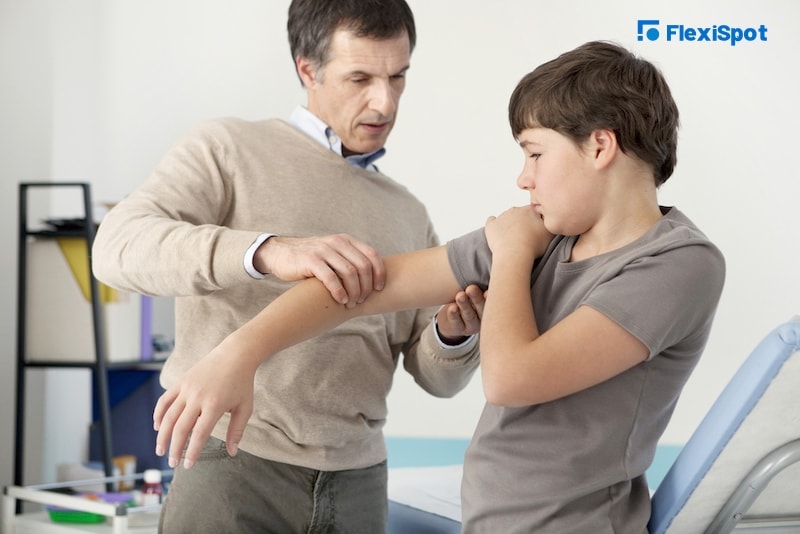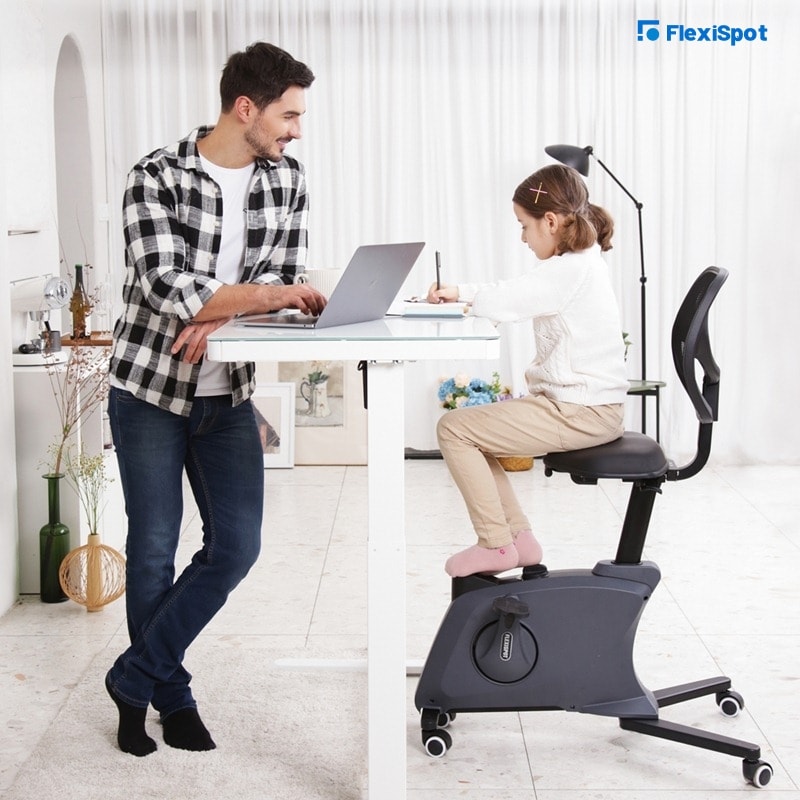Due to the obvious rising use of mobile gadgets and daily technology, practically everyone is at risk of developing a Repetitive Stress Injury (RSI). This is particularly true for younger generations, whose bodies are already strained by expanding tendons and muscles. Injuries to children and teenagers are also much more likely to be disregarded as "growing pains," which, if ignored, may turn into permanent problems.
Bursitis, tendonitis, and even Carpal Tunnel Syndrome are common illnesses that children and teenagers may develop, just like adults.
Each of these disorders produces joint discomfort and swelling, leading to a temporary or long-term limitation of joint mobility if left untreated. Teens are particularly vulnerable because they have a proclivity for exacerbating injuries around the growth plates, which is where the bones rebuild and lengthen.
Overuse Injuries: What Causes Them?
Overuse injuries are more common at the growth plates in teenagers. These are the ends of your bones where the bone cells are prone to multiplying rapidly as a human grows. Overuse injuries are most common in the elbows, knees, shoulders, and heels.
The body's joints and associated tendons and muscles get irritated and inflamed when the same actions are repeated over time.
Overuse injuries may occur in employment that requires repeated duties, such as scanning things as a grocery checker or moving large trays as a waiter. Overuse of specific hand or arm motions might create issues while playing musical instruments. Any repeated activity, including text messaging, might result in harm.
Due to the sheer tremendous physical development happening throughout the preteen and teen years, teens could be at risk of developing overuse injuries. The growth spurt is a time of fast development that occurs with puberty. It can cause increased tightness and tendon strains, making teenagers highly susceptible to injury.
Technological Overuse
Extensive keyboard usage has been related to tendonitis, bursitis, and carpal tunnel syndrome in those who use computers, video games, or mobile phones. The lower arms and wrists must form a 90-degree angle with your upper arm for proper posture. The feet should be flat on the ground. Add a footrest if the youngster or adolescent has problems reaching the ground with their feet.
Since computers are often intended for adult bodies, their usage may cause injury in youngsters. Over time, having a display that is too elevated or a keyboard that is just out of reach might cause pain and damage. Monitor distance and height can be readily adjusted with an adjustable monitor arm to accommodate various body proportions. Proper posture may be encouraged by using an ergonomic office chair with features like lumbar support. The head of a youngster or teenager ought to be parallel to the screen's top.
Wrist and hand injuries are also caused by constant text texting. Children and teenagers should avoid texting for long amounts of time, and it should stop if they become uncomfortable or in pain. Switching hands may relieve tension in certain joints.
Carrying A Lot of Weight
Overburdened backpacks are a well-known issue among children and teenagers. A youngster should only carry 15–20 percent of their body weight in a backpack. Some physicians may even advise patients to carry just 10% of their body weight in order to maintain a healthy weight that does not impair the spine or lower back. To balance the burden, heavy things should always be put towards the bottom of the backpack. If feasible, store any materials not in use in a locker or classroom for a few hours.
The construction of an ergonomic backpack may help avoid back problems. A waist strap moves the weight to your hips. The wide, cushioned straps allow even weight dispersal over the shoulders too. Smaller pockets help to distribute weight evenly over the backpack and make it stick in place.
Increased academic stress and the usage of electronic gadgets in the classroom have made children and adolescents more prone than ever to acquiring RSIs. Parents and instructors may aid in injury prevention by teaching suitable practices and postures and expanding the usage of child-friendly ergonomic equipment.
Common Injuries Caused by Repetitive Stress
Adolescents and teenagers are prone to repetitive stress injuries even more than adults since their physical body is still developing. Here are some common childhood stress injuries they may get.
Bursitis
Bursitis is the inflammation of a fluid-filled sac called the bursa that functions as a cushion for a joint. Bursitis is characterized by discomfort and swelling. It's linked to a lot of overhead reaching, carrying heavy backpacks, and overusing key joints in sports like the knee and shoulder.
Carpal Tunnel Syndrome
Carpal tunnel syndrome is a condition that affects the hands and wrists. In carpal tunnel syndrome, swelling develops within a small "tunnel" produced by bone and ligament in the wrist. This tunnel encircles the nerves that carry motor and sensory impulses to and from the hand, resulting in pain, tingling, numbness, and weakening. Carpal tunnel syndrome is a condition caused by repetitive motion, which may occur when playing video games with joysticks or typing. It's uncommon among teenagers but more prevalent in adults, particularly those who work in computer-related fields.
Epicondylitis
Swelling and pain at the region where the bones meet at the elbow define this illness. Epicondylitis is known as "tennis elbow" since it often affects tennis players.
Osgood-Schlatter
This is a typical cause of knee discomfort in teenagers, particularly those who are going through a growth spurt. The place where the tendon from the kneecap joins to the shinbone may get inflamed with frequent usage and physical stress (such as running long distances).
Patellofemoral Syndrome
Patellofemoral syndrome is a condition that affects the patella and the knee. The cartilage of the kneecap softens or breaks down. Kneeling, squatting, or climbing stairs and slopes may all increase knee discomfort.
Shin Splints
Shin splints are a kind of shin splint that occurs when pain in the leg or shin is referred to as shin splints. Shin splints are a frequent ailment among runners, and they are normally painless, but they may be excruciating. It's tough to distinguish them from stress fractures.
Stress Fractures
Stress fractures are small breaks on the surface of the bone induced by repeated, rhythmic stress. These injuries may occur when a bone is repeatedly stressed when running, marching, walking, or leaping, or when the body is subjected to stress, such as when a person switches between running surfaces or continues to run in worn-out footwear.
Tendonitis
Tendonitis is characterized by ripping and inflammation of the tendons, which are rope-like strands of tissue that link muscles to bones. Tendonitis is caused by the overstretching of tendons as a result of the overuse of certain muscles.
Is It Possible to Prevent Overuse Injuries?
To avoid computer-related accidents, make sure the computer equipment and furnishings fit you correctly and that you type and sit in the ideal postures. If parents are looking for new computer furniture, advise them to get pieces that can be changed to fit each family member.
Here are some suggestions:
Check that the top of the computer screen is parallel to your brow.
Sit upright with the back against the seatback. Chairs with additional support, particularly lumbar (lower back) support, are beneficial. Slumping over the keyboard or tensing the shoulders puts extra strain on the back, neck, and spine.
Place the feet flat on the ground or get a footrest to allow your legs to rest comfortably.
When typing, use a soft touch. You also shouldn't have to stretch for the keyboard; keep it near to you.
When typing, keep your fingers and wrists level. For further support, use a wrist rest. The top section of your arms should be at a 90-degree angle to your wrists and forearms. To avoid bending the side of your wrists, keep the elbows close to the side of the body.
When you're perusing the web or working on a school project, it's easier to lose track of time. Even if you don't feel fatigued or in pain, you should take a break (to stretch or walk about) every 30–60 minutes. We recommend using a timer if you tend to lose track of time. It will remind you to take breaks often.
Opt for a trackball instead of a mouse and use an ergonomic ("ergonomic" implies particularly intended for comfort) keyboard with a curved shape.
Get an Ergonomic Chair from FlexiSpot
If your teenager enjoys gaming, spending time on the computer, or doing their work on a desk, it is best to invest in an ergonomic chair that can support their back and shoulders. Ergonomic chairs are designed to ensure that you are seated at the optimum level with consideration to your wrists and the monitor level. This ensures that your neck, wrists, eyes, shoulders, and back aren’t strained while you are working.



